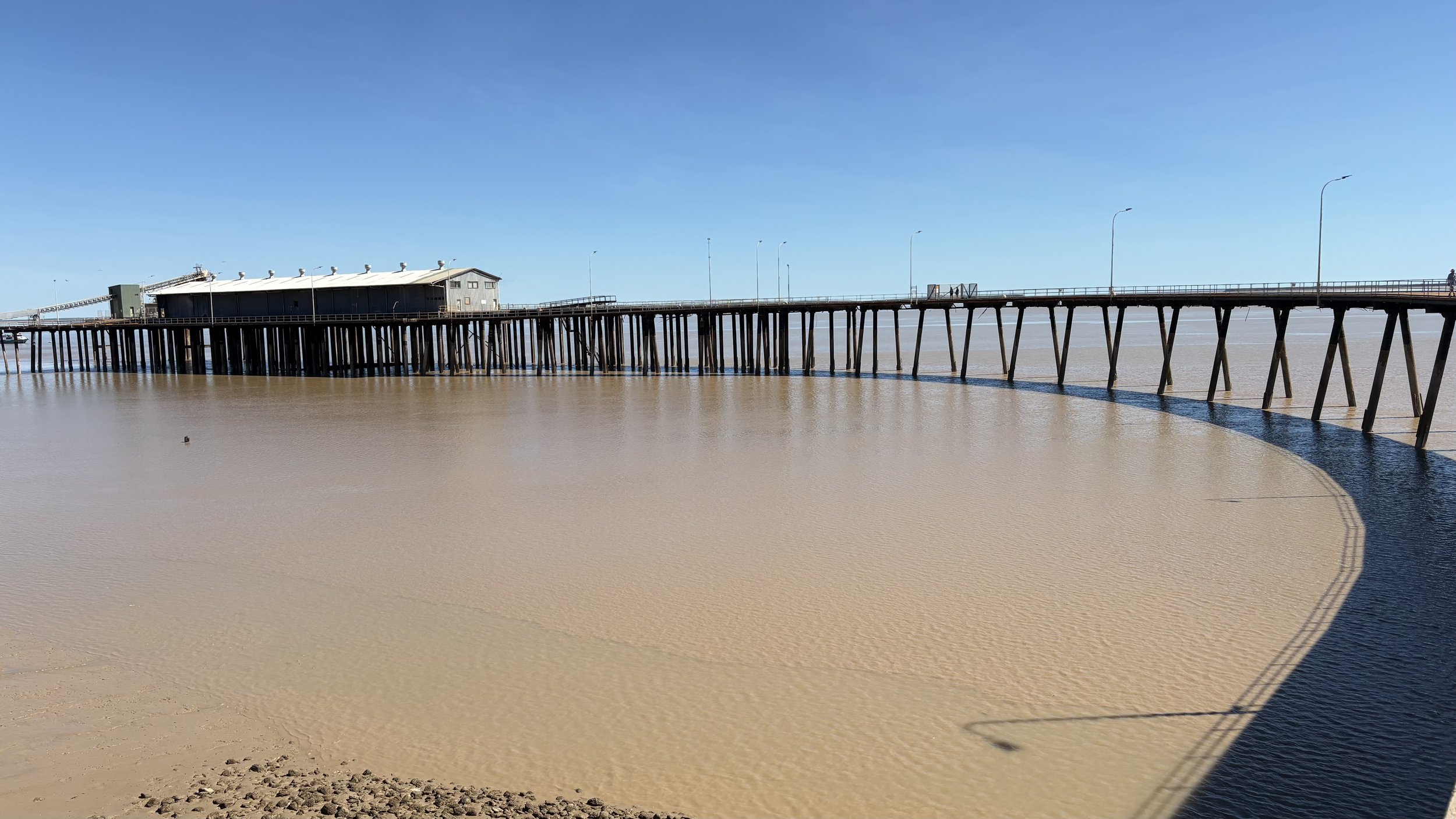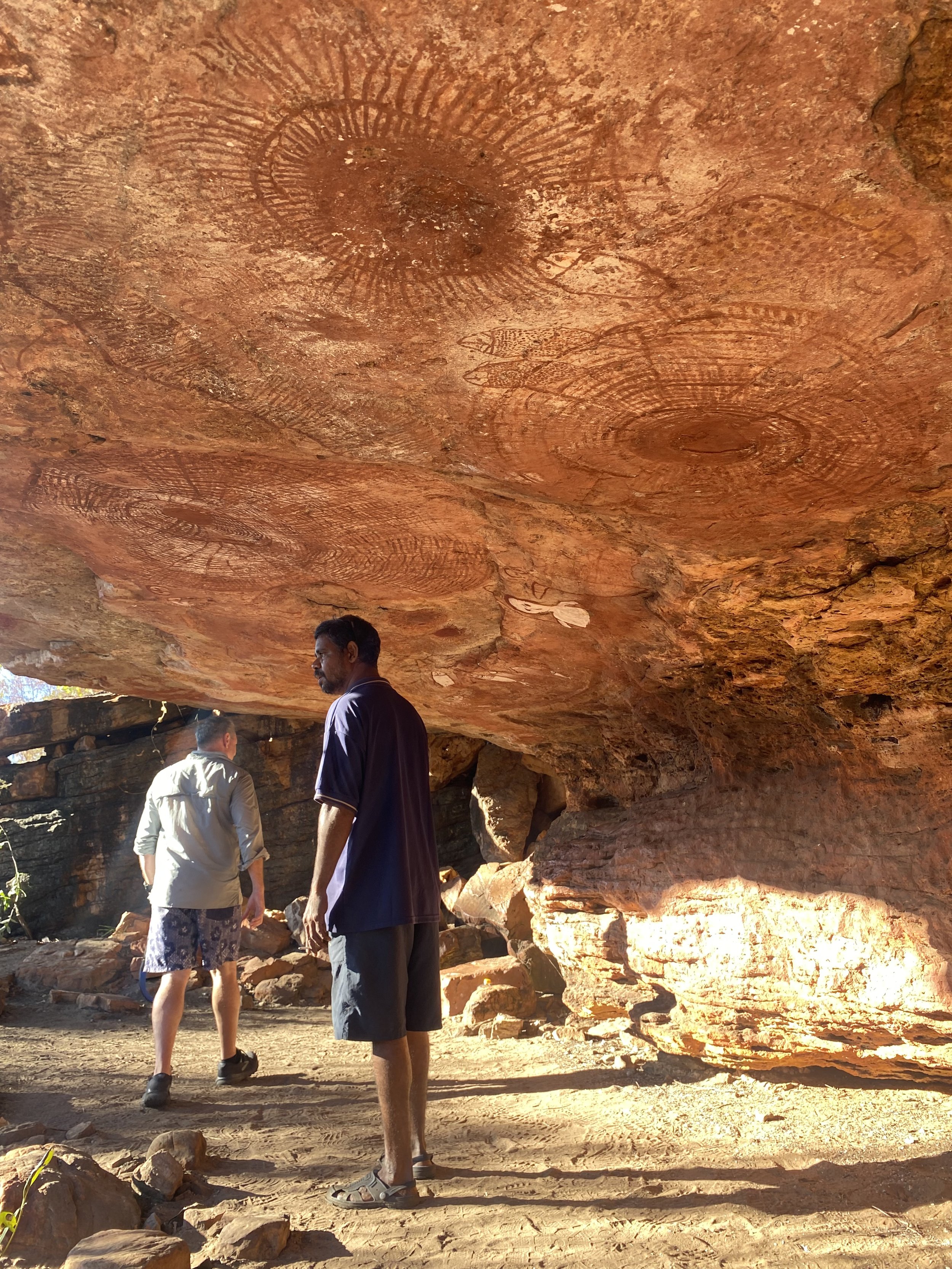Week 16 dust, dreaming and disappointment
Up here in the Kimberley, I want to call so many things I see mighty. The mighty Fitzroy. The mighty ranges. The mighty boab.
The mighty 665-kilometre Gibb River Road was built in the 1960s for cattle transportation between Wyndham and Derby. Before this, pastoralists had hewn tracks between towns and stations in this remote area. Now it’s an outback overlanding wonderland. My parents travelled along this track in the 90s after they won a trip to Broome for two. They arranged to add a 10 day journey along the Gibb to the itinerary. My brother Mark also drove the Gibb several years ago. It is notorious for destroying axles, suspension and tyres, for its corrugations, wash-outs, sand pits and countless river crossings. These challenges are the appeal, I suppose, and its meandering path through the heart of the Kimberley. We’re keen to experience it for ourselves, minus the breakages.
Before leaving the Dampier Peninsula we stop in at Beagle Bay Sacred Heart Church, built in 1917. It’s renowned for its pearl shell decorated alter, built by the local Aboriginal people and priests. I haven’t stepped inside a church for these months of travel and it is a pleasure to be here, with the stations of the cross, images of Jesus and words from the Bible. But there is also a sorrowful side: the children who were taken from their families and housed here at the mission. I read on the website that the church responded to government policy at the time by providing a place of refuge for lost children.
Leaving Pender Bay, the Gibb opens but some National Parks and Wildlife Service (NPWS) roads remain closed. We head toward Derby, a five hour drive, arriving at camp on the Fitzroy River in the dark, our first encounter with crocs. In the light of Jeremy’s powerful head torch we spot about eight pairs of eyes in the river. It’s unnerving to be so near but we’re standing high on the river bank well away from the water’s edge – Croc Wise.
With the boab tree featuring in the landscape, we know we are in Kimberley country. We can’t quite believe we are here, with only a couple of months to go. It’s sad and given how quickly the past four months have gone, we know that the next couple will fly by. What will we miss about our journey? Why are we sad? Obviously a hiatus from regular routines and the quotidian are always a sweet balm, but this feels different.
We do have a lot to look forward to and some iconic roads to travel — the Gibb, Tanemi and Oodnadatta — before landing back into NSW. We determine to savour every moment.
Up in Derby we stop at the Boad Prison Tree, a massive tree with a 14-metre circumference, believed to be more than 1500 years old. Boabs have fibres rather than wood making it difficult to accurately date these beauties. The history plaques here say that Aboriginal men may have been held here in the late 1800s while waiting for transportation either to prison (usually in Derby, sometimes down to Rottnest Island) or to work in the pearling industry, with a chilling photograph of Aboriginal men chained together by the necks.
We have two firm bookings on the Gibb: Windjana Gorge (Bandilngan in local Bunuba language) in early June 6 then El Questro to meet Brodie and John, June 25 and, while the Gibb itself is open, the road to Bandilngan and Tunnel Creek (Baraa) is still closed.
Our first two nights are at Birdwood Downs station stay, just outside of Derby. Whilst nearby, we visit the Derby wharf which arcs over the mud flats exposed by low tide. Interestingly, Derby records Australia’s biggest tidal range.
It is also an opportunity look for local Aboriginal Art. One gallery in town, the Norval Gallery, was established by Mark Norval who has lived in the area since the early 80s. It exhibits both Norval’s work and that of local Indigenous artists and is a space for them to engage in painting, scultping and boab seed carving, with established gardens around the gallery and cafe, shady and cooling in the heat of the day.
We head to the Mowanjum Art and Cultural Centre, another opportunity to learn more about the rich, ancient Aboriginal culture of this country, its history and art. The circular building alone is impressive, with the design based on the wandjina Namarali by Donny Woolagoodja. Remember the Sydney Olympics opening ceremony’s huge wandjina? Same guy.
Mowunjum means ‘settled at last’ and we learn that there are three Kimberley mobs who were settled here in the 1970s, the Worrora, Ngarinyin and Wunumbal people. And then I put two and two together.
Last year, on our Kimberley cruise, we visited Freshwater cove. Neil, the local guy who talked about the rock art there including the wandjina, told us his family story; his grandmother and others were removed from her country and taken to Derby before being relocated on the Gibb, along with a number of other language groups.
The place Neil’s grandmother and family were settled was Mowanjum. The rock art we saw then was by the same people who are making art in this elegant gallery today. We spend a few hours here. One local woman I speak with knows the guys we met last year, too. I love this synchronicity.
Next camp up the bitumen is Lennard River, near the turn-off to Bandilngan and Baraa. There are so many caravans on the western side of the river waiting for the roads to open. We find a spot on the eastern side, tucked away from the road and other campers. It’s peaceful and relaxing. We swim every day. Jeremy catches up on some shooting for the Outback Project. I finish reading Jandamarra and the Bunuba Resistance.
We camp with wallabies who thump when they’re startled before bounding away and hear the crazy laugh of blue-winged kookaburras at dawn and dusk. We also meet some lovely people across the river, Steve and Denise who share their starlink so I can continue tutoring, and Steve and Judy from Stanthorp.
Finishing Jandamarra this week is timely. The initial confrontation between Jandamarra and the pastoralists took place at Bandilngan in 1894, around these lands on which we camp. Spending time swimming in the river, sitting under the trees, listening to the sounds of the bush, I echo Sara’s sentiment; I imagine I can still see the traces of the people who love this place the most.
On Friday afternoon NPWS announces on the web that the roads will remain closed over the weekend, to be reassessed on Tuesday. All our bookings at Bandilngan from Friday night through to Monday are cancelled. It would have been more convenient for us and all the other travellers in this holding pattern to have been notified at least earlier in the day… oh well. Out of respect for the past and the people who no longer access the land or their culture, I’m happy to move on as there’s always next time and we have plenty to see.
It’s one of those things, managing disappointment when plans don’t work out, when things beyond our control roadblock us. A great life lesson. #itsajourney
We pack up camp to head up the Gibb, now the dirt road we are anticipating.










